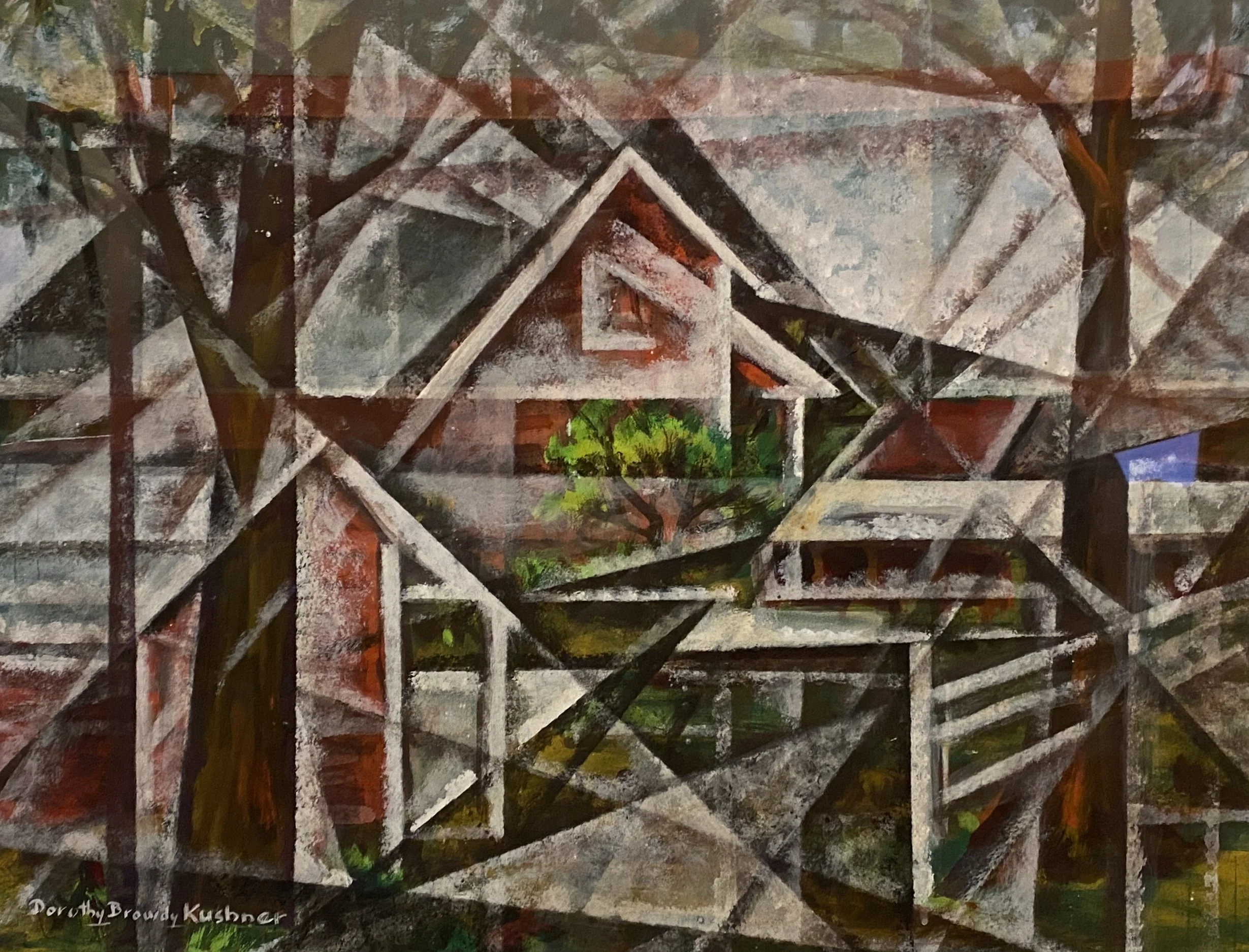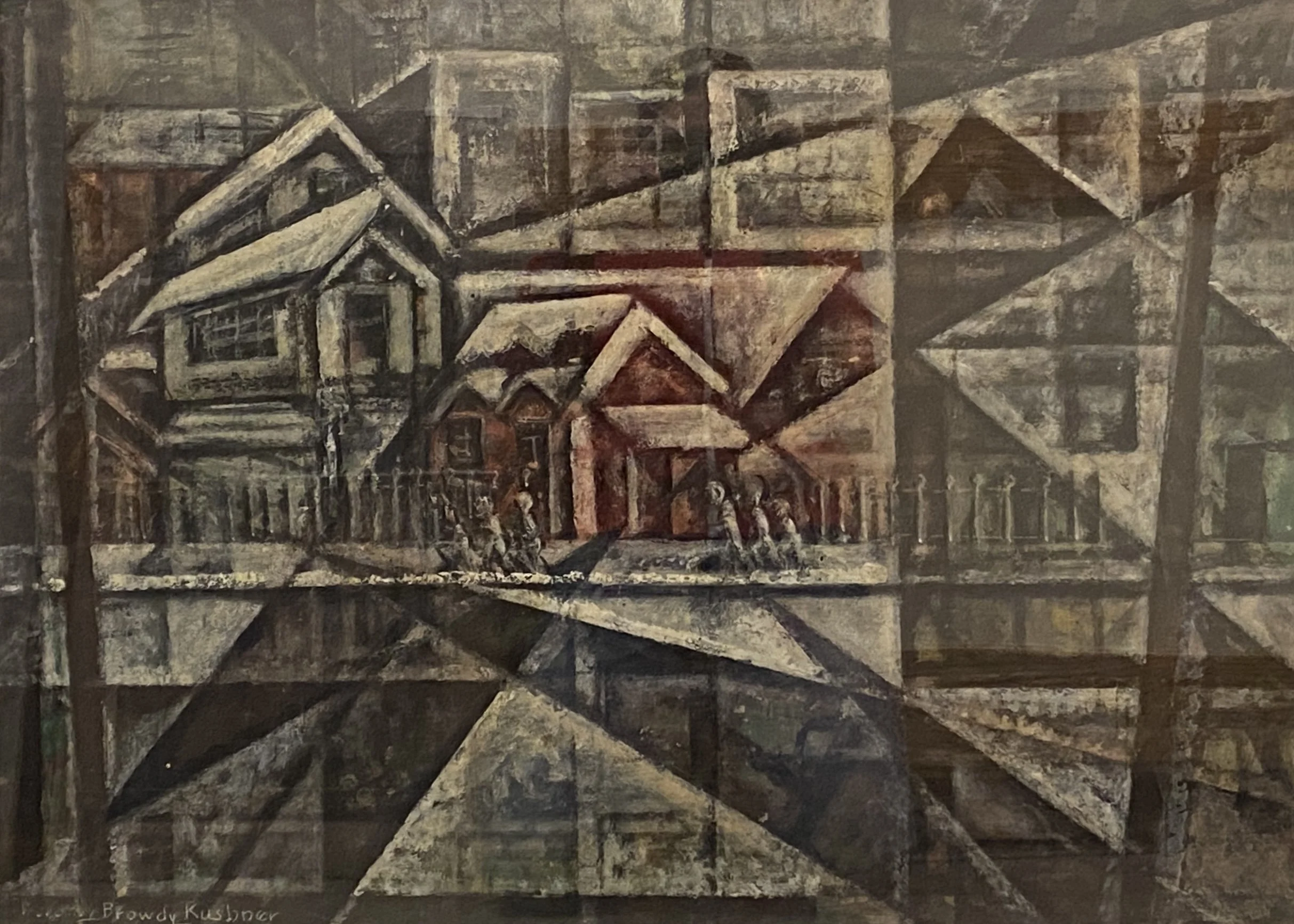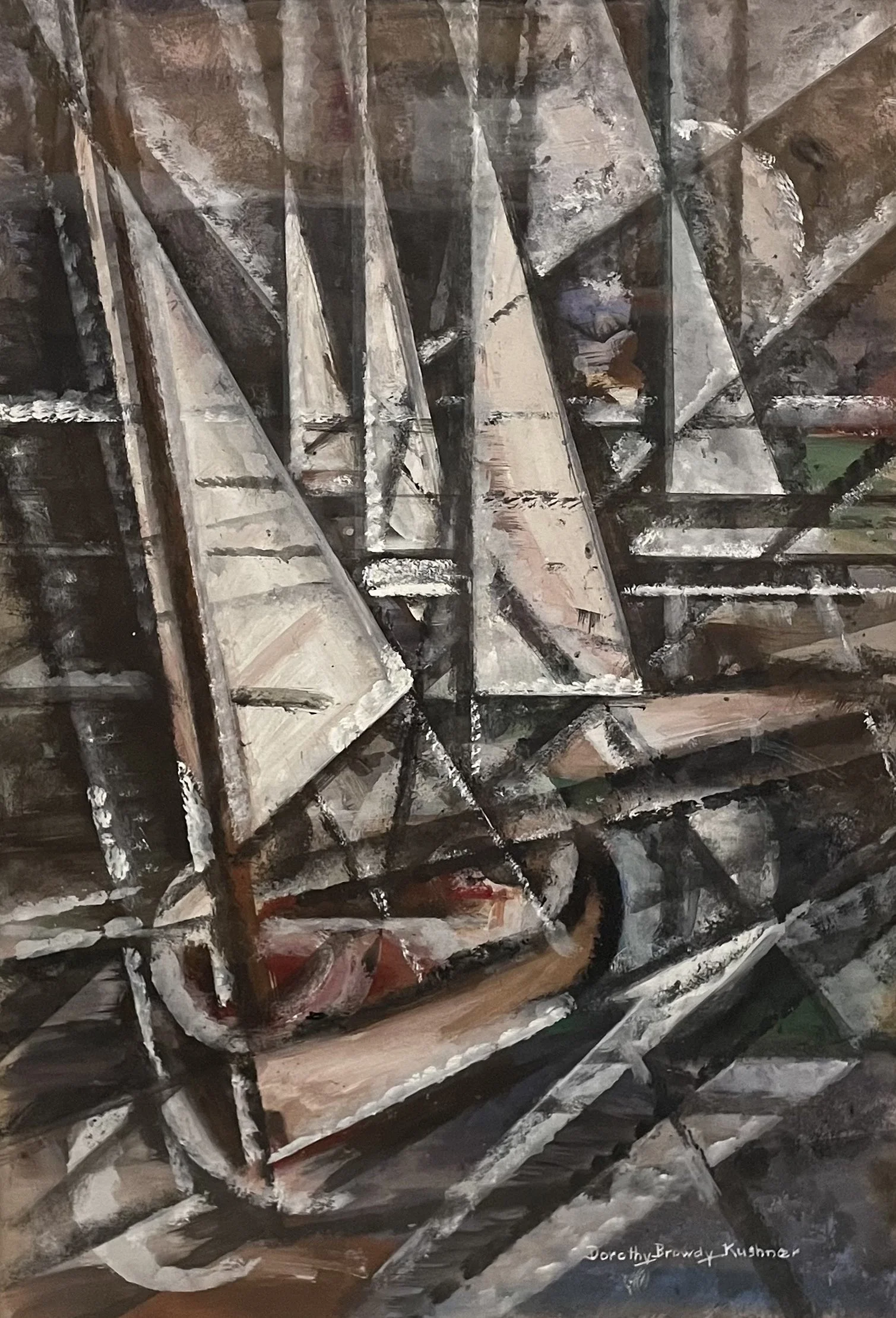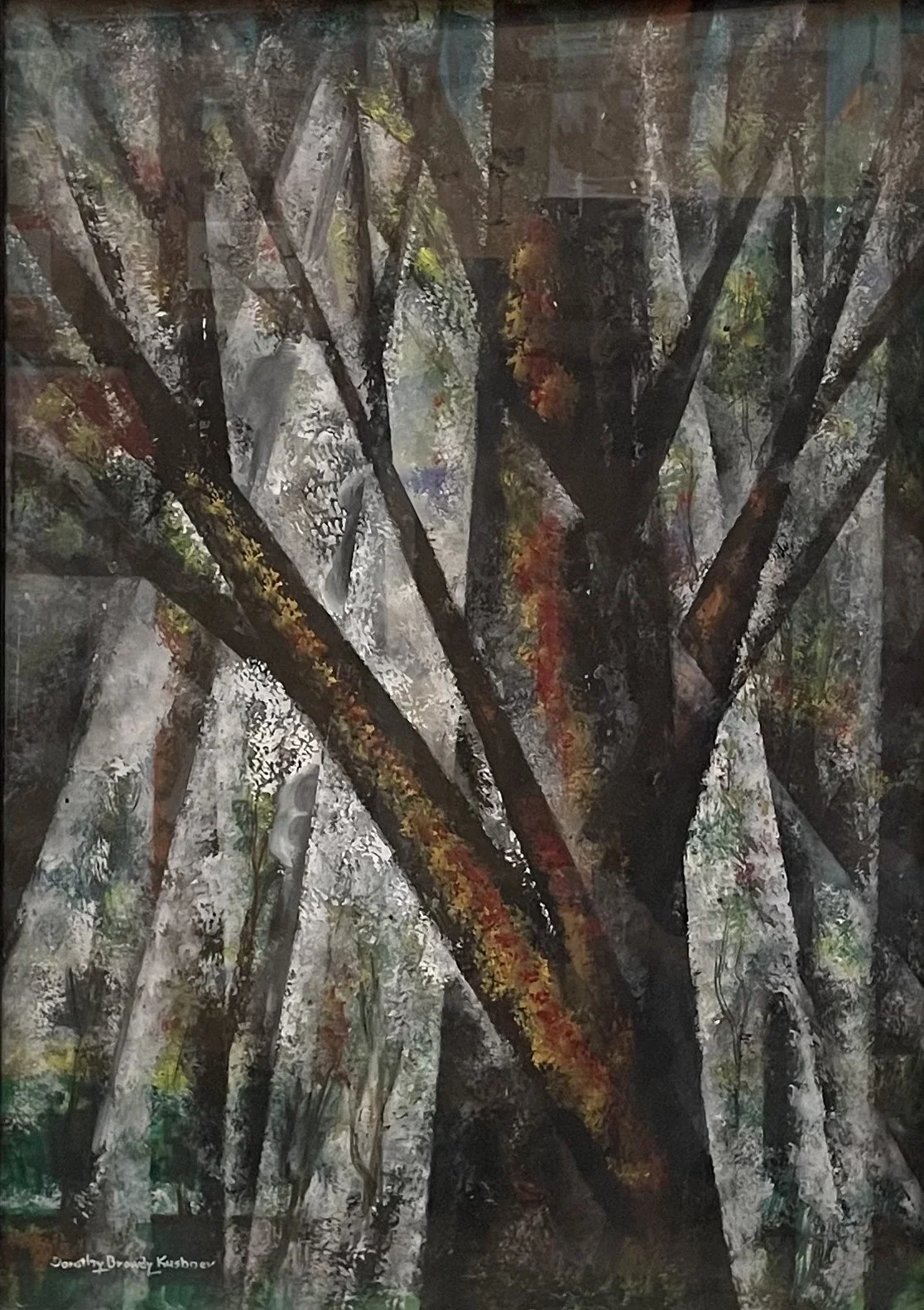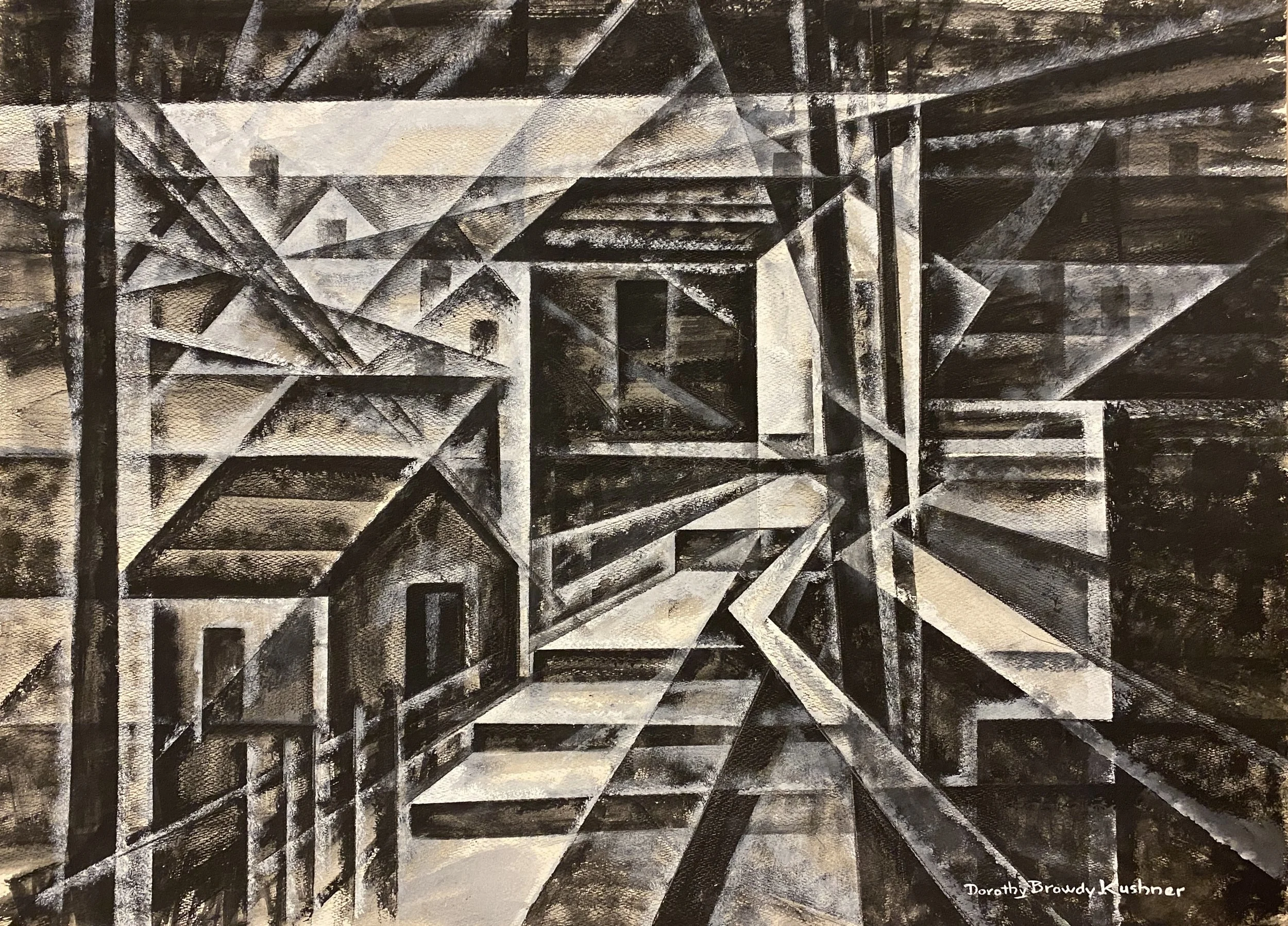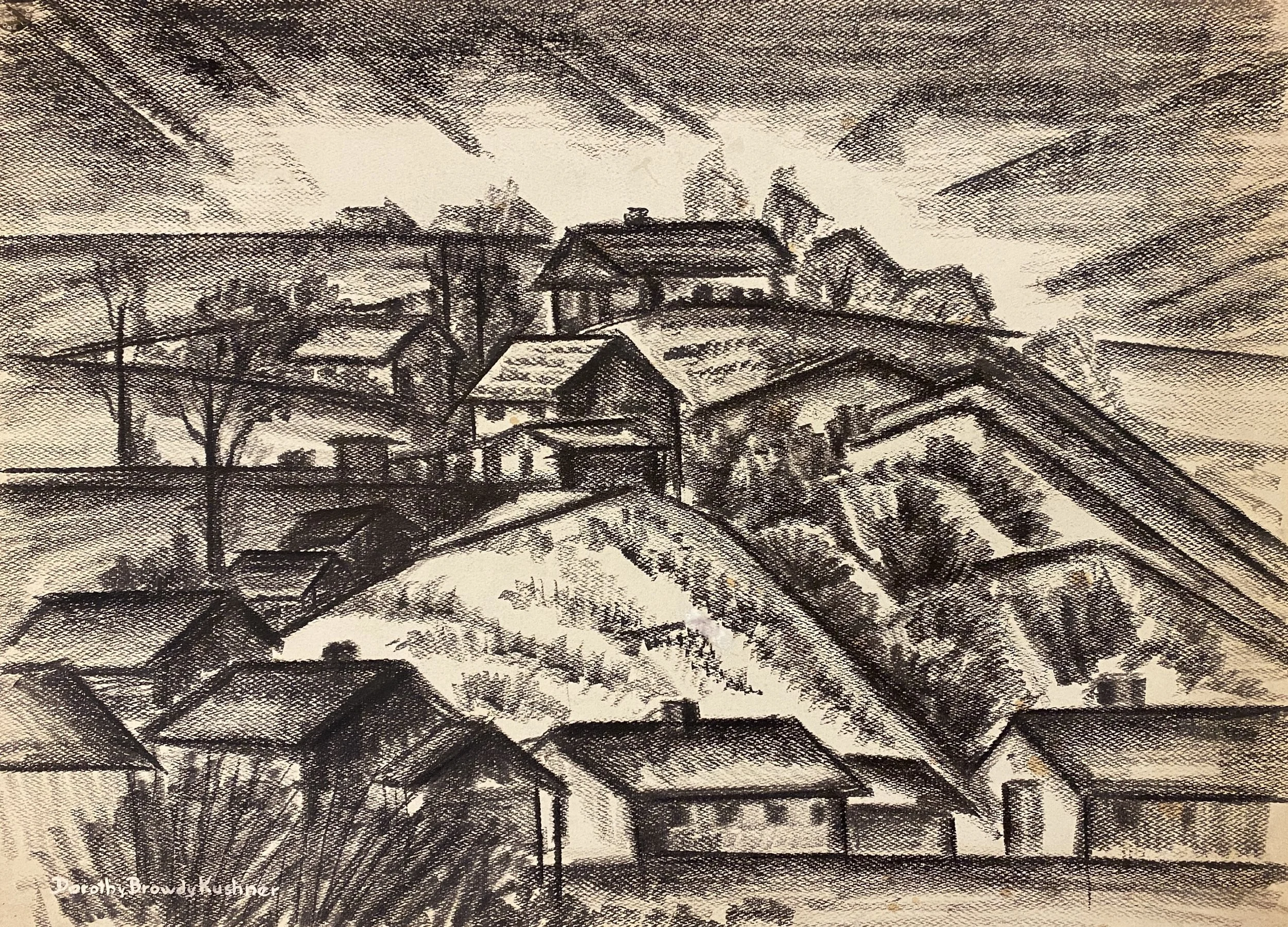
Prismatics
In the late 1940s Kushner began to visit the Pasadena Art Museum housing the extensive Galka Scheyer Collection of Northern European modernist works of the Blue Four: Lyonel Feininger, Vasily Kandinsky, Paul Klee and Alexei Jawlensky. Dorothy was drawn most strongly to the cubist inspired geometric abstractions of Feininger and soon began to experiment more fully with modernism in her own work.
In her “Prismatic Series” she began each work with a representational drawing, then introduced black, white and gray stippled bands of paint to extend and abstract the forms within her compositions. The chroma was cool and silvery, often with primary accents. Many of these paintings were landscapes and trees, particularly a Chinese Elm tree and an Acacia tree on the property. Chickens and ducks from the chicken ranch her family ran became subject matter as well as boats, children, fish — she “prismaticized” everything she could think of. During this period she created works with a stark, unapologetic modernity.
Red Barn, 20.75 x 27", gouache on board, 1949 - 1952
Fish, 14x22", casein on board, 1952
Factory Scene, 21.5 x 29", ink and gouache on board, 1952
Prismatic Sailboats, 25 x 16", ink, gouache, and watercolor on board, 1952
Big Tree, 30 x 22", gouache on board, 1952
Red Barn II, 22 x 27.75", gouache on board, 1949
California Landscape, 20 x 26", ink and gouache on board, 1952
Big Tree II 30 x 22", ink and gouache on board, 1952
Winter Landscape, gouache on board, 8 x 10", 1952
Prismatic House, 10.5 x 18.5", gouache and ink on board 1952-53
Rural California, 21.5 x 27.5", gouache and ink on board 1950s
Big Tree III, 27.5 x 19.25", gouache and ink on board, 1952
Prismatic Angels/Children, 12 x 20", gouache and ink on board 1952
City Steps, 22 x 30", ink and gouache on paper, 1950
Hillside II, 22 x 30", charcoal on paper, 1952
